IGF2R
-
Official Full Name
Insulin-like Growth Factor 2 Receptor -
Overview
The product of this gene belongs to the integrin beta chain family of proteins. Integrins are integral cell-surface proteins composed of an alpha chain and a beta chain. This gene encodes the integrin beta chain beta 2. A given chain may combine with multiple partners resulting in different integrins. For example, beta 2 combines with the alpha L chain to form the integrin LFA-1, and combines with the alpha M chain to form the integrin Mac-1. Integrins are known to participate in cell adhesion as well as cell-surface mediated signalling. Defects in this gene are the cause of leukocyte adhesion deficiency type I (LAD1). Two transcript variants encoding the same protein have been identified for this gene. -
Synonyms
cation-independent mannose-6-phosphate receptor;M6PR;CI-MPR;MPR 300;M6P/IGF2R;IGF-II receptor;M6P/IGF2 receptor;OTTHUMP00000017536;CI Man-6-P receptor;300 kDa mannose 6-phosphate receptor;MPR1;insulin-like growth factor II receptor;cation-independent mannose-6 phosphate receptor;CD222 antigen;MPRI;CD222;CIMPR;M6P-R;IGF2R;insulin-like growth factor 2 receptor
Recombinant Proteins
- Mouse
- Human
- Rat
- Zebrafish
- Chicken
- Bovine
- E.coli
- Mammalian Cells
- Human Cells
- CHO
- HEK293
- Yeast
- His
- Fc
- T7
- Non
- GST
- Avi
- Myc
Background
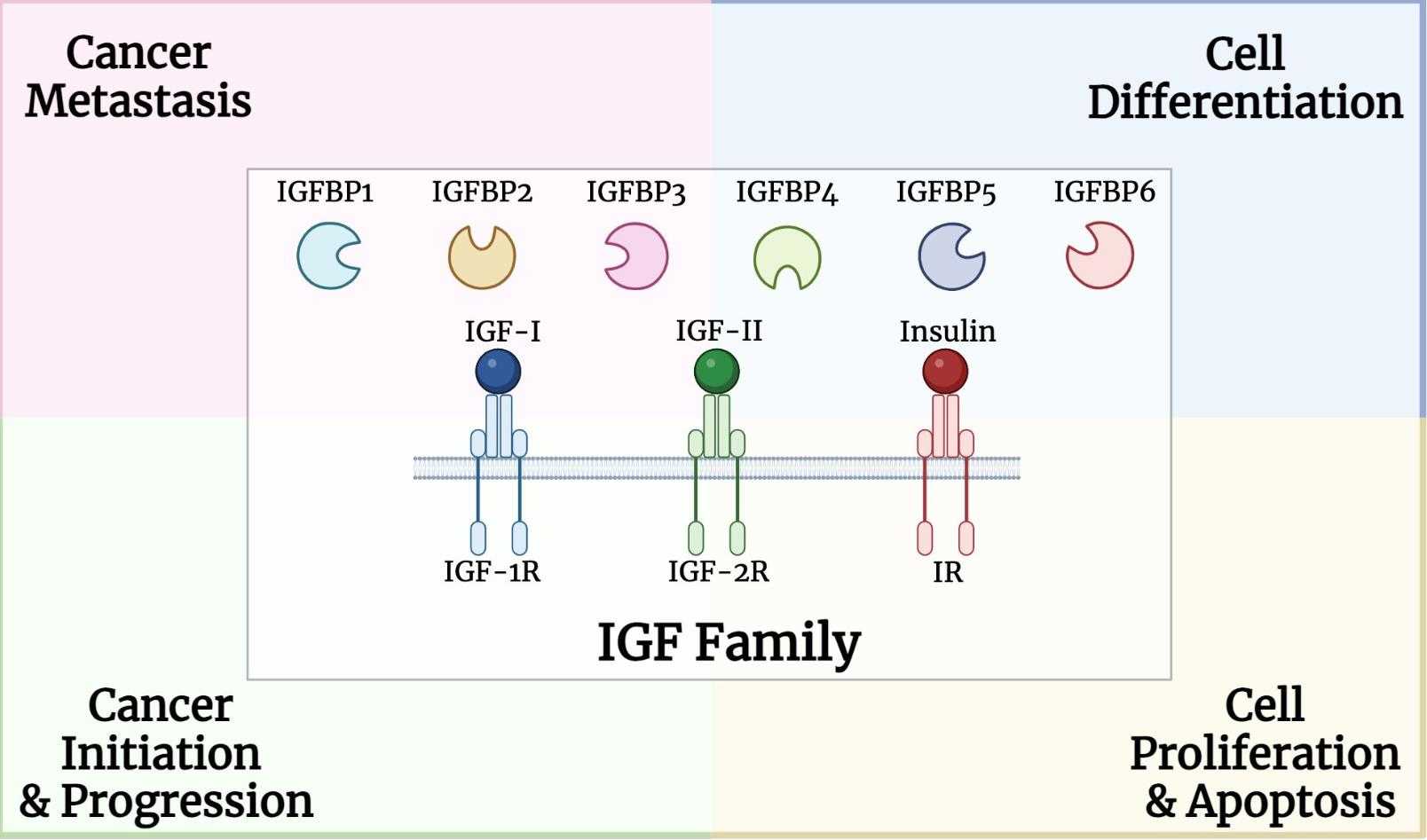
Fig1. Structure and role of insulin growth factor (IGF) family. (Noha M. Elemam, 2024)
What is IGF2R Protein?
IGF2R gene (insulin like growth factor 2 receptor) is a protein coding gene which situated on the long arm of chromosome 6 at locus 6q25. IGF2R, short for insulin-like growth factor 2 receptor, is like a multitasking protein that mainly ferries around insulin-like growth factor 2 (IGF-2). This receptor is key in controlling how much IGF-2 is available, which in turn affects how cells grow, develop, and metabolize. IGF2R directs IGF-2 to lysosomes for breakdown, which stops too much cell signaling that could cause unchecked growth. Apart from growth management, IGF2R plays a part in various cell processes, especially in cancer biology, as it might influence how cells multiply and survive. By teaming up with different proteins and pathways, IGF2R keeps things balanced in the cell and is being explored for its potential in treating issues where growth factor signaling is off track. The IGF2R protein is consisted of 2491 amino acids and IGF2R molecular weight is approximately 274.4 kDa.
What is the Function of IGF2R Protein?
IGF2R is pretty important for keeping our cells growing and functioning normally. Basically, it grabs onto insulin-like growth factor 2 (IGF-2) and manages how much of it is floating around in our body. When IGF2R sends IGF-2 to be broken down in the cell's garbage disposal system, it stops any over-the-top signals that might cause weird cell growth. This whole process is key for normal development and how our cells work. Plus, IGF2R gets involved in a bunch of cell processes, especially the ones related to cancer, since it helps control how cells grow and survive. Because of its interactions with other proteins, scientists are looking into it as a possible target for treatments aimed at diseases where growth signals go haywire.
IGF2R Related Signaling Pathway
IGF2R is a multifunctional protein that plays a big role in managing cell growth and metabolism. The receptor mainly interacts with insulin-like growth factor 2 (IGF-2) and proteins tagged with mannose-6-phosphate (M6P). This interaction helps regulate the availability of IGF-2, preventing over-signaling that might cause unusual cell growth. It's deeply involved in various cell pathways, especially those tied to cancer. Essentially, IGF2R cleans up IGF-2 from the cell surface, moderating signals for normal cell functioning. Because of its key role in these processes, researchers are looking into IGF2R as a potential target for treating diseases related to growth factor signaling gone awry. Its ability to interact with several proteins makes it crucial for keeping cellular balance.
IGF2R Related Diseases
IGF2R plays a role in both normal cellular processes and diseases. It acts as a sort of regulator by binding to insulin-like growth factor 2 (IGF2), which helps calm excessive cell growth signals. When this receptor doesn't function properly, it can lead to problems like tumors, as seen in pancreatic and liver cancers where its expression might be altered. Researchers are interested in IGF2R because it's a potential target for therapies aimed at managing diseases linked to uncontrolled growth signals, offering hope for new treatments in conditions like cancer.
Bioapplications of IGF2R
IGF2R plays a pretty interesting role in the field of biomedicine. It's mostly about how it manages and regulates growth signals in the body. This makes it a valuable point of interest when scientists are looking for ways to tackle diseases like cancer, where cell growth goes out of control. By studying IGF2R, researchers are trying to develop treatments that can help keep cellular processes in check and thus prevent or treat such diseases. So, in summary, IGF2R's potential in therapies is all about its role in managing cellular growth and metabolism, making it a key target in biotechnological research to combat growth-related diseases.
Case Study
Case Study 1: Takashi Takeda, 2019
Cervical cancer is the most common type of female cancer worldwide, but the outlook for patients with advanced or recurring cases is still grim. The insulin-like growth factor 2 receptor (IGF2R) plays multiple roles, interacting with molecules like IGF-2 and mannose-6-phosphate (M6P)-tagged proteins. As an IGF1R signal blocker, IGF2R is thought to act as a tumor suppressor, though its role as an M6P receptor isn't fully understood. Analysis of open datasets like TCGA and GEO reveals higher levels of IGF2R in cervical cancer, linked to worse outcomes. Lab studies on cervical cancer cells show that cutting back IGF2R can trigger cell death, reduce cell health, and make cells more sensitive to the cancer drug cisplatin. Interestingly, while IGF2R doesn't seem to affect IGF1R signaling much, its loss messes with the movement of M6P-tagged proteins from the Golgi to lysosomes. This disruption leads to lower lysosomal function, buildup of faulty proteins, and increased reactive oxygen species due to impaired autophagy and mitophagy.
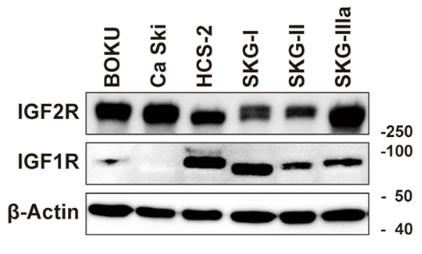
Fig1. Western blot analysis of IGF2R and IGF1R in cervical cancer cell lines.
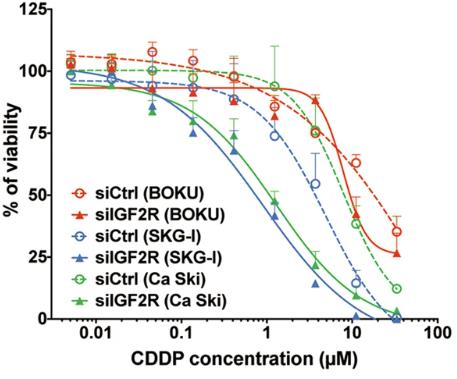
Fig2. Sensitivity of IGF2R-knockdown cells to cisplatin.
Case Study 2: Xiao-Wen Yu, 2020
The cation-independent mannose-6-phosphate receptor, also known as insulin-like growth factor two receptor (CIM6P/IGF2R), is crucial for growth and development. It's found a lot in the mature nervous system, especially the hippocampus, but what it does there is mostly a mystery. One of its key partners, IGF2, plays a big role in forming and strengthening long-term memories. Studies using CIM6P/IGF2R inhibition in rats and targeted knockdown in mice show that this receptor is crucial for consolidating memories in the hippocampus, but it's not really needed for learning, remembering, or updating memories. It affects the production of proteins like Arc, Egr1, and c-Fos during training, but doesn't change their mRNA levels. Interestingly, giving mannose-6-phosphate, similar to IGF2, can boost memory retention and make it last longer, and this is dependent on CIM6P/IGF2R.
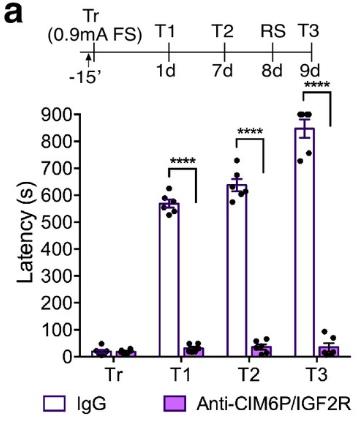
Fig3. The effect of a single injection of anti-CIM6P/IGF2R on memory retention.
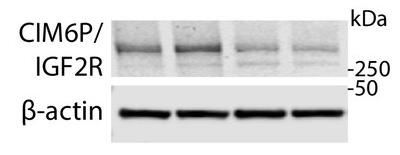
Fig4. Western blot analyses comparing total and synaptoneurosomal extracts.
Quality Guarantee
High Purity
.jpg)
Fig1. SDS-PAGE (IGF2R-344H)
.
.jpg)
Fig2. SDS-PAGE (Igf2r-1729R)
Involved Pathway
IGF2R involved in several pathways and played different roles in them. We selected most pathways IGF2R participated on our site, such as Lysosome,Endocytosis, which may be useful for your reference. Also, other proteins which involved in the same pathway with IGF2R were listed below. Creative BioMart supplied nearly all the proteins listed, you can search them on our site.
| Pathway Name | Pathway Related Protein |
|---|---|
| Lysosome | GALNS,CTSSB.1,ATP6V0B,SMPD1,NAGPA,GM2A,CD164,AP1S3B,GGA3,LITAF |
| Endocytosis | CHMP5,SH3GL3A,SPG20A,ASAP2,IQSEC1,WAS,ERBB4,BIN1,LDLRAP1,DNM2 |
Protein Function
IGF2R has several biochemical functions, for example, glycoprotein binding,identical protein binding,insulin-like growth factor binding. Some of the functions are cooperated with other proteins, some of the functions could acted by IGF2R itself. We selected most functions IGF2R had, and list some proteins which have the same functions with IGF2R. You can find most of the proteins on our site.
| Function | Related Protein |
|---|---|
| phosphoprotein binding | DPYS,SERPINB1A,PLAT,LYN,TBL2,YWHAB,SFN,THRAP3,CSNK1D,APTX |
| mannose binding | MBL1,CD207,COLEC10,MRC1,CLN5,BSG,CD209,M6PR,DPM1,CD209C |
| transporter activity | Abca2,SLC12A10.2,GABRA5,ABCB10,FABP6,MUP17,CRABP2A,TMEM184C,MFSD9,MIPB |
| protein binding | TRPV6,CCDC109A,C16orf48,CCNC,TAF1B,GRIN2C,DOT1L,FAM207A,RAB27A,BLMH |
| receptor activity | ITGB1B,CD160,TREM2,NLGN2B,BTN1A1,CHRM3,ADIPOR1,CRLF1,NLGN3,ITGB1B.2 |
| identical protein binding | NOL3,SH3GL3,PTEN,IRF3,BRI3,APOH,CBY1,COL18A1,SHANK3,GSTM3 |
| glycoprotein binding | SERPINA1D,SELP,VIM,TGFB1,LACRT,FBXO27,HSPA5,DNAJA2,FOXRED2,LMAN2 |
| insulin-like growth factor binding | IGFBP6A,HTRA1B,IGFBP5B,Igfbpl1,IGFBP3,WISP3,HTRA3,WISP1B,WISP2,KAZALD3 |
| insulin-like growth factor-activated receptor activity | IGF1R |
Interacting Protein
IGF2R has direct interactions with proteins and molecules. Those interactions were detected by several methods such as yeast two hybrid, co-IP, pull-down and so on. We selected proteins and molecules interacted with IGF2R here. Most of them are supplied by our site. Hope this information will be useful for your research of IGF2R.
GGA1;GGA3;IGF2
Resources
Related Services
Related Products
References
- O'Doherty, AM; Magee, DA; et al. DNA methylation dynamics at imprinted genes during bovine pre-implantation embryo development. BMC DEVELOPMENTAL BIOLOGY 15:-(2015).
- Moore, GE; Ishida, M; et al. The role and interaction of imprinted genes in human fetal growth. PHILOSOPHICAL TRANSACTIONS OF THE ROYAL SOCIETY B-BIOLOGICAL SCIENCES 370:-(2015).



